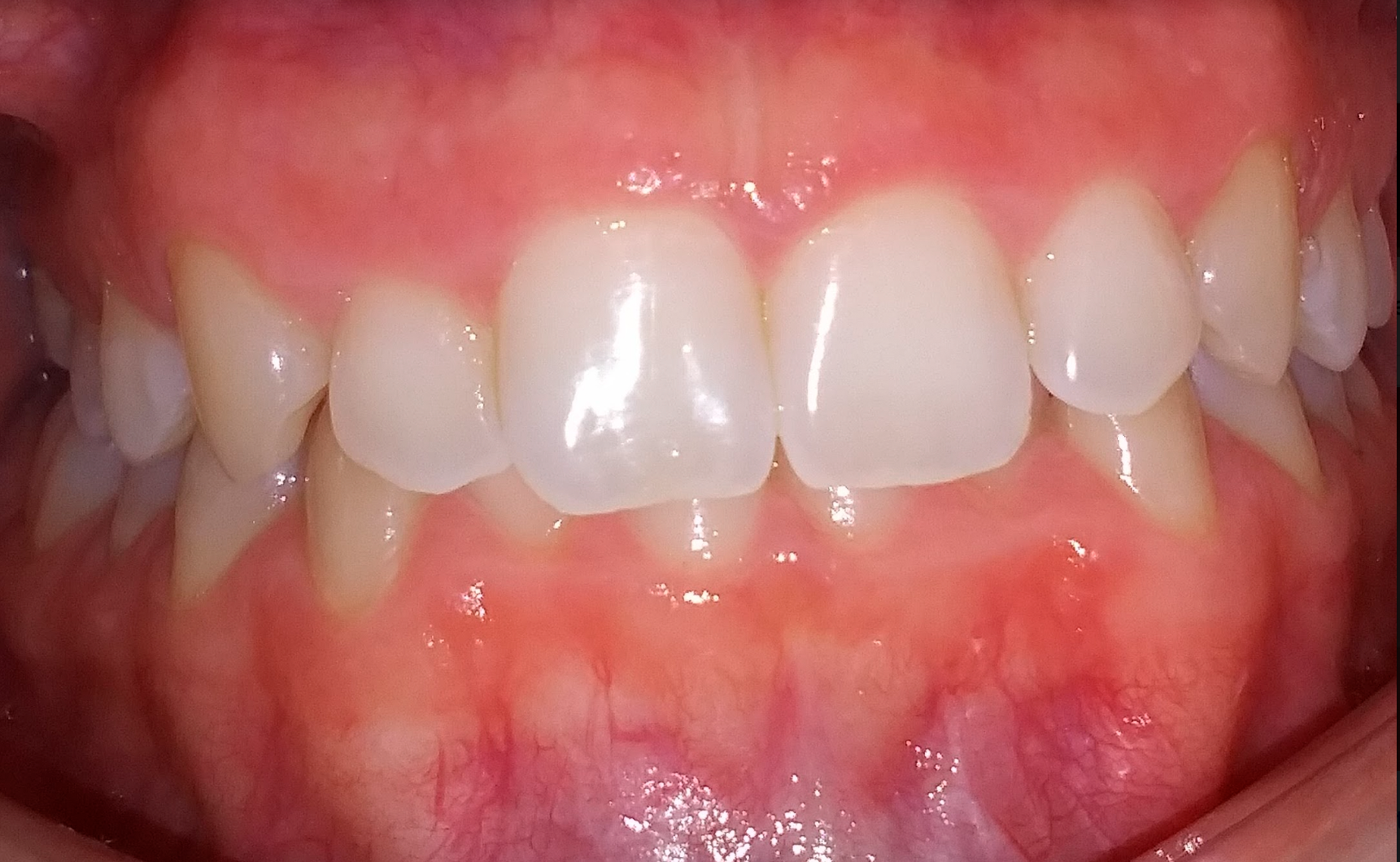Teeth malocclusion: types, causes and treatments
Teeth or dental malocclusions are some of the more common problems that patients face when seeking orthodontic treatment. Outside of just bite and aesthetic issues, malocclusion can lead to other long-term consequences like jaw pain or even speech development problems in children. So it’s vitally important to detect and treat dental malocclusion as soon as possible. Here we’ll go over everything you need to know about the different types and classifications of malocclusions, as well as what exactly malocclusion of the teeth is and how to treat it.
What is the definition of teeth malocclusion?
Having an understanding of the meaning of malocclusion and what it is, is important before diving any deeper. The definition of malocclusion is simply just an incorrect bite. The word breaks down into “bad” and “bite.” Normally, in correct bites, the lower and upper arches fit together perfectly, facilitating chewing and preserving the teeth. This isn't the case for people with teeth malocclusion. So to answer the question, “what is malocclusion of the teeth?” All you really need to know is that the meaning of malocclusion is a disease in which the teeth of the upper jaw do not fit correctly with the teeth of the lower jaw.

Malocclusion types and classes
When we look at dental malocclusions, we are not just examining a single specific problem: there are multiple different types and classes of malocclusions. The classification of malocclusion is formed according to which plane they affect. Let's have a look:
Sagittal malocclusion
The first type of bite problem we’re going to check out is the sagittal malocclusion. This is when there is an issue with the position of the lower and upper molars. Sagittal malocclusion has its own classification system and can be divided into three classes:
Class 1 malocclusion
Interestingly enough, class 1 malocclusion is actually when a patient has a normal bite. Meaning there is not really a malocclusion or poor bite, but rather, dental alignment problems such as crowding or gaps. Class 1 malocclusion is usually characterized by a predisposition to oral problems such as caries, periodontal disease, and gingivitis. Additionally, the dental surfaces tend to have more erosion.
Class 2 malocclusion
Then, in class 2 malocclusions, the first upper molar is further forward than the first lower molar. Plus, the upper incisors can often be tilted in or out of the mouth, known as dental protrusion. Usually, people with class 2 malocclusion have their chin and lower lip retracted in comparison to the upper arch. Some of the consequences of class 2 dental malocclusion are excessive wearing of the teeth, and a higher risk of suffering from bruxism.
Class 3 malocclusion
Lastly, in class 3 malocclusion, the lower jaw is too far forward in comparison to the upper jaw. This type of malocclusion, like the ones before it, can be caused by dental issues or bone problems. Apart from the aesthetic consequences, class 3 malocclusion usually leads to serious problems with the temporomandibular joint and bite trauma. The class 3 malocclusion tends to cause an edge-to-edge bite, which is when the front bottom and top teeth come into contact when biting. In a normal bite, the top front teeth close down in front of the bottom front teeth, not directly on top of them.
Transverse malocclusion
The definition of transverse malocclusion is a discrepancy in the width of the upper and lower jaws and/or problems with dental inclination. Transverse malocclusions can be divided into two types:
Posterior crossbite malocclusion
A posterior crossbite malocclusion is characterized by the molars and premolars of the upper jaw closing and touching down inside the lower jaw.
Scissor bite malocclusion
Scissor bite malocclusion is when the palatal surfaces (the inside part of the teeth, closest to the tongue) of the upper molars and premolars collide with the buccal surfaces (the outside part, closest to the lip and cheek) of the lower ones.

Vertical malocclusion
With vertical malocclusions, there is only sometimes contact between the upper and lower teeth, depending on the specific issue. Vertical malocclusion is split up into different types of bite problems:
Open bite malocclusion
First we have open bite malocclusion. This is where the teeth do not overlap vertically. Meaning, the front teeth of patients who suffer from open bite malocclusion, do not come into contact when they bite down.
Overbite malocclusion
Then with overbite malocclusion, upper front teeth cover more than a third of lower front teeth when the patient closes mouth. Although there is contact between the premolars and molars, the front teeth sit in a way that makes the lower ones near invisible.
Causes of malocclusion
There are many factors that can cause teeth malocclusion. Some of them are avoidable and other are not, let’s take a look:
- Genetic factors. For example, when the jaws develop incorrectly from birth, it can later be one of the causes of the malocclusion. Also, certain birth defects such as cleft lip or palate are inherited conditions that can also cause malocclusion of the teeth
- Bad oral habits. Having habits such as sucking your thumb, mouth breathing at night or using a pacifier for many years are some of the factors that cause dental malocclusion
- Missing teeth. Missing teeth, whether due to genetic causes, oral diseases such as pyorrhea or caries, or trauma, can be another cause of malocclusion.
Symptoms of malocclusion
Sometimes, when the malocclusion doesn't present any obvious symptoms and isn't very noticeable, it's more difficult for the patient to identify that they have a problem. However, when it comes to issues with a high degree of complexity, there are, in fact, certain symptoms that can help you detect this problem. Some of the symptoms of malocclusion are:
- Noises when opening and closing the mouth
- Facial, ear, jaw, or headache pain
- Difficulty during chewing and sometimes even pain
- Problems when opening or closing the mouth

Malocclusion consequences
Malocclusions play a major role when it comes to suffering from certain diseases or health problems. Among the consequences of malocclusion are the following:
- Aesthetic effects. Malocclusions can alter the physiology of the face. They are known to cause asymmetries, altering the natural harmony of the face.
- Health and oral hygiene issues. A dental malocclusion problem can eventually lead to more serious health problems that go hand-in-hand with poor oral hygiene. If you can’t adequately reach all the corners of your mouth, tartar or plaque can accumulate, which could lead to problems such as pyorrhea, swollen gums, and bad breath, and several others. That’s why it’s extremely important to maintain good oral hygiene and prevent any diseases associated with malocclusion.
- Pain. Pain is sometimes another consequence of malocclusion. This pain can be felt in the TMJ and cause headaches.
- Other health problems. Malocclusion can also cause respiratory problems, This is because it can influence the correct closure of the mouth. It can also lead to speech-related problems and pronunciation issues.
How to treat malocclusion
Thankfully, the use of orthodontics has revealed how to treat malocclusions. In order to achieve a complete malocclusion treatment and correction you’ll need to consult with an orthodontic specialist to analyze the case in detail and propose a personalized orthodontic treatment to fix the malocclusion. Malocclusion correction will always require orthodontic treatment. As we mentioned previously, the specialist will dictate the necessary steps to correct the bite problems, depending on the severity and classification of the malocclusion.
Some of the orthodontic treatments that can be applied to treat malocclusion include braces, clear aligners, palate expanders and extraoral appliances that fall within interceptive orthodontics. In addition to orthodontics, in some cases the correcting a bad bite may require orthognathic surgery (maxillary/mandibular surgery) or extraction of teeth in cases where there is a bone problem, but the goal is always to avoid the surgical option. In any case, following your specialist’s recommendations is essential to the success of the treatment.
To relieve any pain that might be caused by malocclusion, rehabilitation therapy can also be prescribed in case the TMJ is overloaded or headaches develop from the malocclusion.

Impress: specialists in correcting dental problems like malocclusion
At Impress we are a team made up of experts in invisible orthodontics using removable aligners. We have experienced medical personnel in both dental malpositions and bite problems. Additionally, all of our clinics are full of cutting-edge technology that helps us diagnose and treat a wide variety of cases, including malocclusions of the teeth.
During your initial consultation we’ll perform an exhaustive diagnosis of your bite and your mouth’s health. To do this, we take X-rays, plus a 3D scan to get a detailed image of your oral cavity, all in a complete in-person dental check-up.
Did you know that we have our own app? With it you’ll be able to follow your orthodontic treatment remotely, going only to the necessary check-ups if we need to adjust the treatment for any reason or just to make sure that everything is going perfectly. You’ll also have 24/7 support through our app in case you have any problems or questions.
Our prices are closed with a fixed rate so there won’t be any surprises. We also offer the option to finance your treatment in instalments. You can get in touch with us by calling (888) 490 1421 or book your initial consultation online to discover how we can solve your bite issue.
We want to officially invite you to a free initial consultation with zero commitment or obligation. Come on in and discover your personalized treatment plan with Impress!
Frequently asked questions about malocclusion
What could be a genetic cause of malocclusion?
There are multiple genetic factors that can cause malocclusion, the most common are cleft palate and cleft lip.
Can malocclusion be fixed?
Yes! In most cases, malocclusion can be fixed by using orthodontics. However, we should remind you that each case must be evaluated individually by a specialist.
How can I prevent malocclusion?
The truth is, malocclusion can only be prevented when it’s caused by having bad oral habits like, thumb sucking or when children use a pacifier for too long. Outside of habits like these, it’s not possible to prevent malocclusion.



